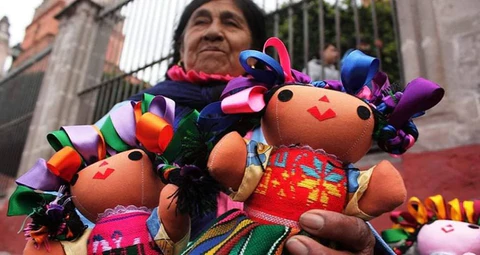
Otomí and Mazahua are indigenous groups in Mexico, each with their own distinct languages, cultures, and traditions. These two cultural groups converge in the Lelé doll, whose origins can be traced back to workshops organised in México City for Mazahua-Otomí women, as part of a national programme aimed at bolstering economic opportunities for indigenous people that have migrated to big cities (Questa Rebolledo & Utrilla Sarmiento, 2006).
Nowadays, the Lelé dolls are crafted not only in Queretaro but also in Mexico City, Hidalgo, and Veracruz, mainly by Otomí women (Lazcano Arce, 2005).

To this day, Otomí women face a myriad of challenges that are ingrained in the intersectionality of gender, ethnicity, and socioeconomic status (Questa Rebolledo & Utrilla Sarmiento, 2006)
Due to traditional gender roles practised in Otomí culture, women’s roles are primarily confined to domestic and agricultural sectors with very limited access to land ownership and resources, making it difficult to improve their economic standing. Furthermore, they often marry early, while the education of Otomí men is prioritized over women’s (Questa Rebolledo & Utrilla Sarmiento, 2006).
Post-colonial societal standards prioritize Hispanics over indigenous peoples, resulting in limited access to education (especially higher education), restricted employment opportunities, and economic marginalization. For these reasons, Otomí mainly rely on agriculture and artisanal crafts for their livelihood. However, indigenous women in particular have even fewer opportunities for income due to the continuous undervaluation of their artisanal work (Lazcano Arce, 2005).
